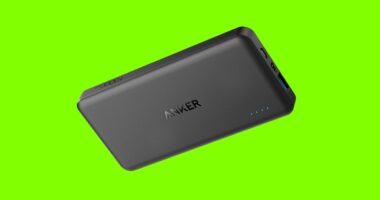Later this year, Apple Inc. will introduce features that allow users to control an iPad with their eyes, and its smartwatch with gestures like a pinch or a fist clench.
The company announced the moves this week as part of Global Accessibility Awareness Day on May 20, an event established in 2011. Other big tech players revealed initiatives and commitments of their own, from automatic podcast transcriptions by Spotify Technology S.A. to the updated design of a specific virtual block in Microsoft Corp.’s “Minecraft” to make it more visible to colorblind players.
“Companies’ interest in accessibility has definitely grown since 2011,” said Joe Devon, a co-founder of the digital agency Diamond as well as Global Accessibility Awareness Day, also known as GAAD. “Part of the reason is that there is a big movement toward equity and inclusion, and if you’re excluding people with disabilities, you can’t really be inclusive.”
AssistiveTouch, Apple’s hand-movement control feature for its smartwatch, was designed to let those with upper-body limb differences use the Apple Watch without having to touch the display or controls, the company said. But once it launches, all users will be able to switch it on, regardless of whether they identify as disabled, a company spokesman said.

Microsoft’s ‘Minecraft’ video game updated the pattern of one of its blocks to make it easier for colorblind players to recognize.
Photo: Microsoft Corp.
Later this year, the operating system of the iPad will support third-party eye-tracking devices, making it possible for people to control the tablet using just their eyes, Apple said.
It also plans to introduce “background sounds,” including ocean and rain effects, that iPhone users can play as they use other apps to help minimize distractions and stay calm. The company said it developed the feature in support of people who are neurodiverse. Neurodiversity relates to conditions that affect cognitive functions, like autism and dyslexia.
Another new service, available in the U.S., the U.K. and France starting this week, offers sign-language interpreters for deaf and hard-of-hearing people who contact Apple’s customer-service centers.
Spotify, for its part, also redesigned some buttons on its mobile app to make them easier for low-vision and visually impaired people to spot, and a new interface design for users who choose to increase the font size on Apple’s mobile operating system.
Microsoft’s other moves included a new Accessibility Insider League that lets any Xbox player who identifies as a person with a disability offer accessibility feedback directly to company engineers and game developers.
Some accessibility advocates called the breadth of the updates appreciated, but not surprising. Global technology companies have invested heavily in making their products more usable to more people over the past decade, said Jonathan Hassell, founder and chief executive officer of Hassell Inclusion, an accessibility consulting firm based in the U.K.
“The big guys tend to do the right thing,” said Dr. Hassell. “The thing that now needs to be done is for everybody to follow their lead.”
Many smaller and medium-size organizations are also dedicated to delivering accessible products and services, according to Emma Goddard, inclusive design and accessibility lead at Deloitte Digital.
But the duo behind GAAD believe more will do so if the tools commonly used to build websites and applications go as far as possible to guarantee accessible products.
Mr. Devon and his GAAD co-founder, Jennison Asuncion, for the last year have been encouraging organizations to take the “GAAD Pledge,” a commitment to make accessibility as central to product design as privacy and security. Two of the first to sign on are Ember.js and Facebook Inc.’s React Native, open-source frameworks that other firms use to build digital products.
Others are making moves on their own. Wix.com Ltd. , a company that provides cloud-based web-development services, last month introduced a feature called the Accessibility Wizard that scans users’ sites to find features that could present problems for people with disabilities and impairments. And International Business Machines Corp. this week rolled out an update to its own Accessibility Checker tool to coincide with GAAD 2021.
Write to Katie Deighton at [email protected]
Copyright ©2020 Dow Jones & Company, Inc. All Rights Reserved. 87990cbe856818d5eddac44c7b1cdeb8








